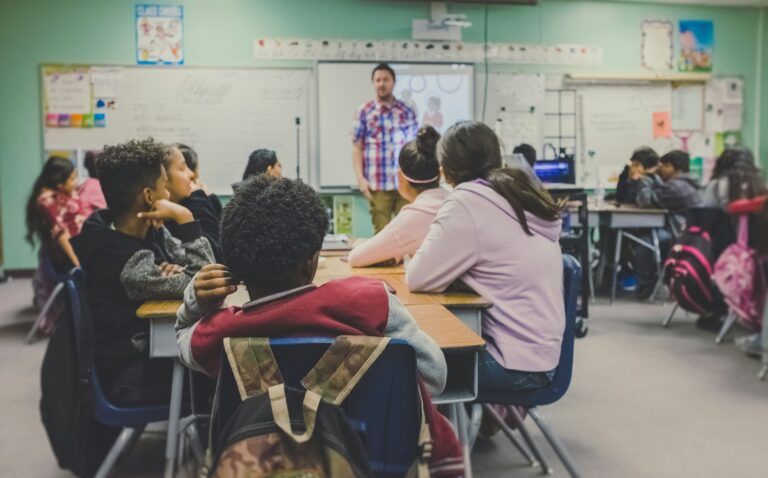Having variety is one of the best ways to help make lessons more interesting and engaging for students, but it’s easy to start running out of ideas. Keep reading a we provide some inspiration by covering top tips for making lessons more fun and improving the learning experience for students.
Interactive Technology Integration: Bringing Lessons to Life
Incorporating interactive technology into the classroom can significantly enhance the learning experience. Utilising educational apps, interactive whiteboards, and online simulations can transform mundane lessons into engaging activities. Virtual field trips, for instance, allow students to explore historical sites, delve into ecosystems, or even travel through space—all from the comfort of their classroom. These experiences make learning more enjoyable and provide a deeper understanding of the subject matter.
Gamification of Lessons: Learning Through Play
Introducing elements of games into the curriculum can make learning more enjoyable. Educational games and quizzes can be designed to reinforce key concepts and skills. Incorporating friendly competition through activities like trivia contests or classroom games not only adds an element of fun but also motivates students to actively participate in the learning process. Platforms such as Kahoot! and Quizizz offer customisable quizzes that turn learning into a lively competition.
Hands-On Learning: Turning Theory Into Practice
Learning by doing is a powerful method to ensure information retention. Practical, hands-on activities, experiments, and projects allow students to apply theoretical knowledge in a real-world context. For instance, science experiments, art projects, or even simple DIY tasks can turn the classroom into a vibrant workshop, fostering creativity and critical thinking skills. Taking teaching outside of the classroom for hands-on learning experiences such as overnight school trips is also a great way to boost students’ learning experience.
Flexible Seating Arrangements: Creating Comfortable Learning Spaces
Departing from the traditional rows of desks and embracing flexible seating arrangements can contribute to a more engaging classroom environment. Incorporating comfortable seating options, collaborative workspaces, and even standing desks allows students to choose an environment that suits their different learning styles. This adaptability makes the classroom more visually appealing and accommodates diverse learning preferences.
Guest Speakers and Real-World Connections: Bridging the Gap Between Theory and Practice
Inviting guest speakers from various fields can bring real-world relevance to classroom lessons. Experts sharing their experiences and insights can inspire students and provide a tangible connection between academic concepts and practical applications. Additionally, arranging field trips to local businesses, museums, or cultural institutions can broaden students’ perspectives and make learning more enjoyable by connecting it to the world outside the classroom.
Thematic Learning Days: Adding Fun and Creativity to Routine
Introducing thematic learning days can add an element of excitement to routine classroom activities. For example, a historical era could be brought to life through themed dress-up days, interactive storytelling sessions, or role-playing activities. Thematic days make learning more fun and create a memorable and immersive educational experience.
Incorporate Multimedia Resources: A Visual Feast for Effective Learning
Visual aids, multimedia presentations, and educational videos can significantly enhance the learning experience. Integrating these resources into lessons adds a dynamic dimension to the classroom, catering to different learning styles. Visual elements can simplify complex concepts, making them more accessible and memorable for students.
In conclusion, making learning more enjoyable in the classroom involves a combination of innovative teaching methods, technology integration, and a departure from traditional approaches. By embracing these tips, educators can create an environment that imparts knowledge and fosters a love for learning among students.
